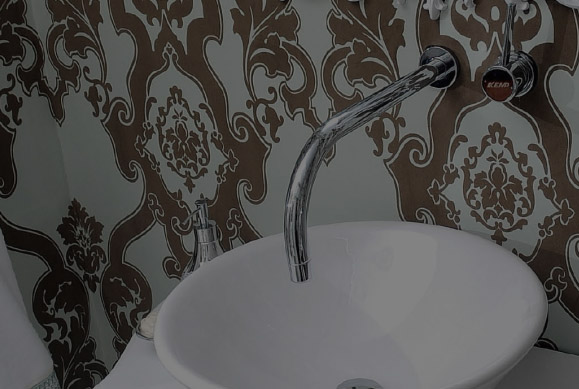Phone:+86-13906742187
Installing brass basin faucets in different bathroom sink configurations requires careful consideration to ensure proper functionality, aesthetics, and compatibility. Here are key considerations for installing brass basin faucets in various bathroom sink setups:
Sink Type and Design:
Consider the type of bathroom sink you have, whether it's a drop-in, undermount, wall-mounted, pedestal, or vessel sink. Different sink designs may require specific faucet configurations.
Number of Faucet Holes:
Check the number of pre-drilled faucet holes in the sink. Faucets can have single-hole, 4-inch centerset, 8-inch widespread, or wall-mount configurations. Ensure that the faucet style you choose matches the available holes in the sink.
Faucet Size and Reach:
Consider the size of the faucet and its spout reach in relation to the size of the sink. A large faucet may overpower a small sink, while a small faucet may not be practical for a large basin.
Height of the Faucet:
Ensure that the faucet height allows sufficient clearance between the spout and the sink basin. Taller faucets may be suitable for vessel sinks, while shorter faucets may work well with undermount or drop-in sinks.
Spout Style:
Choose a spout style that complements the sink design. High-arc faucets are suitable for filling larger vessels, while low-profile or straight-spout faucets may be more appropriate for minimalistic designs.
Finish Compatibility:
Consider the finish of the brass faucet in relation to other bathroom fixtures, such as cabinet hardware, towel bars, and showerheads. Ensure a cohesive design by selecting matching or complementary finishes.
Installation Height:
Verify the optimal height for installing the faucet. The faucet should provide comfortable access to the water flow without causing splashing. Consider the user's needs, such as whether the sink will be used by adults, children, or individuals with mobility concerns.
Valve Type:
Check the type of valve the faucet uses. Some faucets have ceramic disc valves, which are durable and require minimal maintenance. The valve type can affect the faucet's longevity and performance.
Water Flow Rate:
Verify the water flow rate of the faucet, as some regions have regulations regarding maximum flow rates. Additionally, consider water-saving features if conservation is a priority.
Installation Compatibility:
Confirm that the selected faucet is compatible with the installation requirements of your specific sink type. Wall-mounted faucets, for example, may have different installation considerations compared to deck-mounted ones.
Plumbing Configuration:
Assess the existing plumbing configuration and ensure that the selected faucet is compatible with your plumbing setup. Some faucets may require specific connections or additional components for proper installation.
Installation Tools and Expertise:
Ensure you have the necessary tools and expertise for installation. If you're not comfortable with plumbing tasks, consider hiring a professional plumber to install the brass basin faucet correctly.
By carefully considering these factors, you can select and install brass basin faucets that enhance the functionality and aesthetics of your bathroom sink while ensuring a proper fit with your chosen configuration.

 English
English Español
Español Deutsch
Deutsch 中文简体
中文简体














